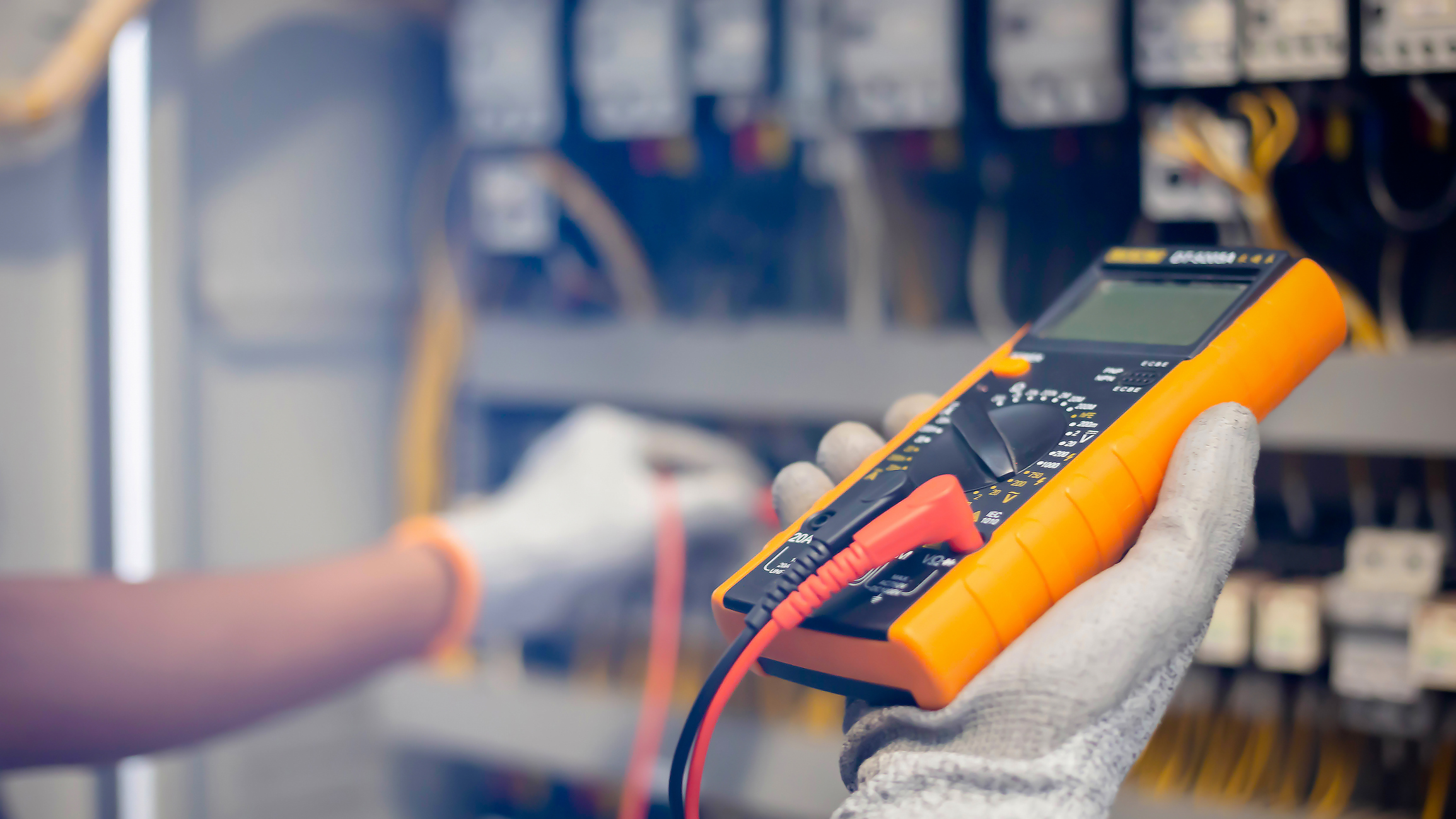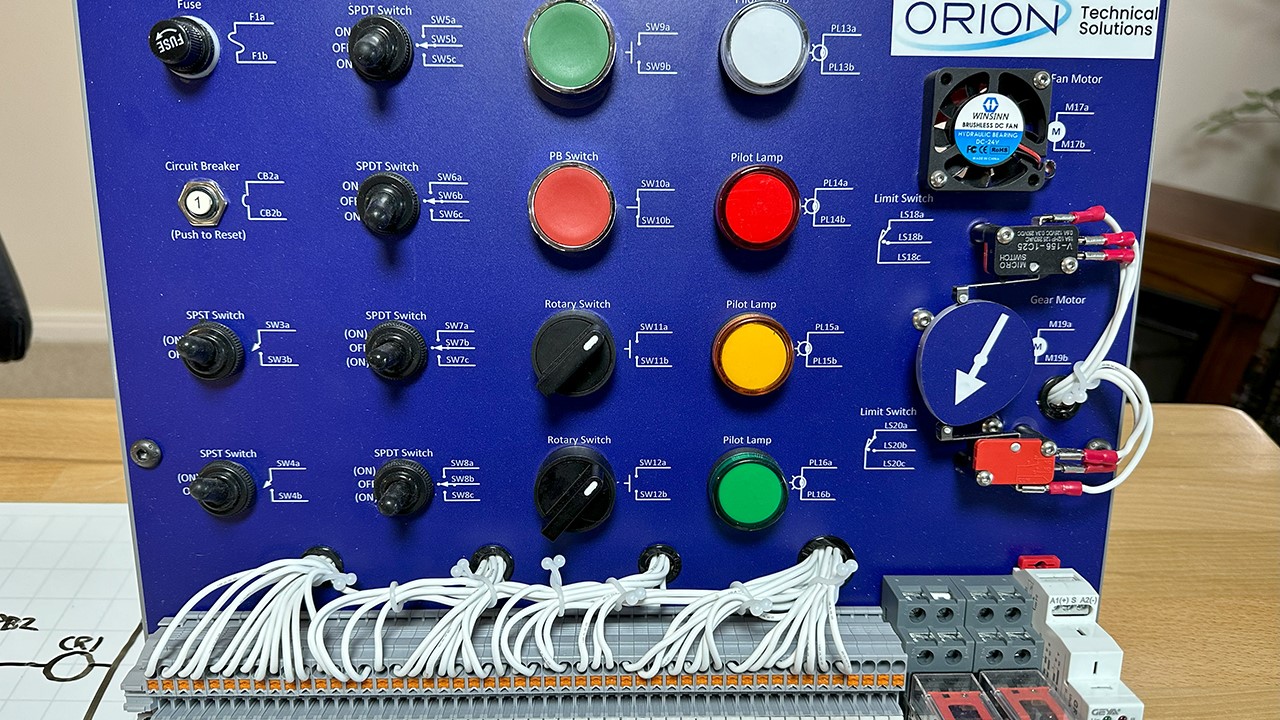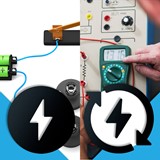Course Overview:
Delivery Options:
Length: 2-days
Percent Hands-on: 75%
Description: This course helps the students begin making sense of typical electrical circuits, schematics, prints, and diagrams, and helps them develop a sound logical approach to troubleshooting.


Electrical Troubleshooting Station (Main Panel)
Course Approach:
In this electrical troubleshooting training course, students will build and then troubleshoot increasingly complex electrical circuits. Using our exclusive ELTS training stations, Students will construct numerous electrical circuits using our quick-connection DIN Rail style terminal blocks and clip on wire marker numbers to match the applicable prints / wiring diagrams. This class does an excellent job of helping students correlate schematics, diagrams, and prints to the real world and helps students learn to use the available references and resources instead of leaning on 'tug-tracing' wiring or other incomplete practices.
After they have constructed the circuit properly, students will operate the circuit and take various measurements to observe behaviors under good conditions to relate the circuit to the applicable diagrams and schematics. Once students understand the circuit operation, the instructor will insert one of many available faults into the circuit (bad components, etc.) and the students will be tasked to utilize our 7-step method to logically troubleshoot the circuit based on the symptoms and results of measurements.
Rather than simply focusing on whether the students find the fault or not - this course emphasizes the LOGIC students used to find the fault. We strive to 'unteach' the practices of 'easter-egging' or 'guessing' (i.e. poking around with fingers crossed).
Each troubleshooting problem includes real discussions about why each troubleshooting step was performed and what could have been done better or differently. This training approach has proven incredibly successful at helping technicians learn to troubleshoot in a more methodical & logical manner, because that is ultimately what boosts the performance level of any maintenance technician.
The course focuses on utilizing a logical troubleshooting methodology, to include analyzing and solving the likely root cause of failures and determining appropriate retest procedures. After each troubleshooting scenario, we will discuss what could have been done more logically or more efficiently in the troubleshooting.
As part of the 7-step troubleshooting process, we will also discuss Root-Cause-Failure (RCF) analysis and necessary RETEST procedures to ensure full functionality of the full system. Many I&E technicians fail to fully perform these important steps, which results in repeated failures, newly caused faults, cost of and possible damage to 'swapped' parts or other systems, repeated or excessive downtime, and many other expensive and/or unsafe situations.
Benefit:
This course is extremely helpful for anyone who works directly with electrical circuits or who works alongside electrical personnel or works with equipment interfacing with electrical circuits. Along with strengthening the skills of a qualified electrician, the training could help a manager who needs to better understand the work of electricians or instrument technicians, as well as a mechanic or an operator who works indirectly with electrical equipment. Along with solidifying the student’s understanding of electrical circuits, this course helps establish a more logical approach and methodology to problem solving and troubleshooting in general. This course has received excellent feedback from electricians, instrument technicians, operators, mechanics, and others who are directly or indirectly involved with electrical troubleshooting and problem solving.
Course Objectives:
- Understand and be able to read and interpret electrical ‘ladder’ diagrams to include understanding wire numbers, terminal numbers, component tags, etc.
- Relate electrical ladder diagrams to typical wiring diagrams, schematics, and other prints.
- Know how to methodically build (and/or trace or interpret a circuit) from a wiring diagram and/or ladder diagram or schematic.
- Understand the difference between electrical ladder diagrams, schematics, and wiring diagrams and know when and where to use each.
- Learn to read and interpret an electrical diagram to predict system operation, voltage, and current readings at key points.
- Learn to use advanced features of digital multimeters to advance troubleshooting capabilities (Diode check, min/max/avg, continuity test, etc.)
- Learn how to troubleshoot common components including various types of switches, indicators, relays, timers, diodes, capacitors, etc.
- Learn to utilize troubleshooting tricks such as half-splitting, negative tie-down & voltage tracing vs voltage drops, comparison checks to working circuits or branches, avoiding parallel circuit errors, etc.
- Learn to utilize a systematic logical troubleshooting methodology.
- Learn to keep track of symptoms, measurements, tests, and outcomes when troubleshooting.
- Learn how and why to find the root cause of failure for all equipment failures.
- Learn to determine necessary retest requirements for various equipment, systems, and components pertaining to safety, operations, efficiency, regulatory requirements, etc.
Hands-on Exercises:
- Construct a series of increasingly complex circuits on our Electrical Training Stations per provided electrical prints, schematics, ladder diagrams and/or wiring diagrams. The circuits constructed will include various types of switches, circuit protection, indicators, pneumatic solenoids, potentiometers, speed controls, SPST relays, DPDT & reversing relays, timing relays, motors, pumps, pressure switches, cam/limit switches, motor contactors & electronic overloads, etc.
- Troubleshoot numerous realistic faults that are inserted into the circuits, focusing on using a methodical approach and sound logic.
Related Courses
|
Dates |
Event Details |
Course Title |
Cost |
Register |
|
Jan 5-7, 2026 |
Dallas - Forth Worth, TX |
$1995 |
Registration Closed |
|
|
Jan 8-9, 2026 |
Dallas - Forth Worth, TX |
$1495 |
Registration Closed |
|
|
Jun 1-3, 2026 |
Houston, TX |
$1995 |
3 seats remaining |
|
|
Jun 4-5, 2026 |
Houston, TX |
$1495 |
4 seats remaining |


